The Best Delay Pedals 2023 - Analog & Digital
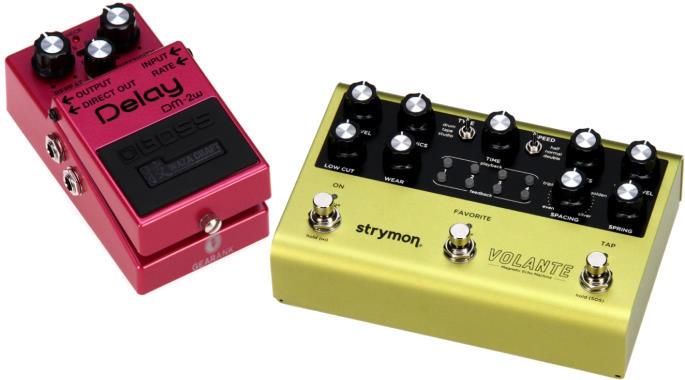
Author & Contributors
Alexander Briones
I have been writing about and researching music gear for many years, all while serving as a music director at my local church. I engage in guitar playing and singer-songwriter stints, in addition to mentoring young musicians and teaching guitar and bass.
The Best Analog Delay Pedals - Single Switch
We’ve covered the difference between analog and digital delay in more depth elsewhere in the guide, but in case you’re not into reading a ton of technical jargon: analog delay sounds warmer and more natural while digital more accurately replicates what you play. If you favor an organic tone over to-the-millisecond accuracy, analog is the way to go. This section features the best standard / compact size analog delay pedals that are available today.
MXR M169 Carbon Copy Analog Delay Pedal
Cons
- Limited delay time
- Not as dark sounding as vintage analog delays
- Limited control options, no tap tempo
Pros
- It has clear sounding repeats for slapback echo use
- Can be warm enough for wide ambient soundscapes
- Built-in modulation effect
- Easy to get good analog delay tones
MXR is a brand that straddles the line between mass production and boutique. The MXR M169 combines the organic and chunky tone of famous analog delays without the associated fragility. It was designed as a collaboration between MXR Engineer Bob Cedro and Way Huge pedals founder, Jeorge Tripps.
The delay times, while not competitive with digital delays, can dish out everything from country slapbacks to Gilmour-esque sonic landscapes. It has clear sounding repeats for slapback Echo use, and it can also go warm enough for wide ambient soundscapes.
Interestingly, the MXR M169 also allows you to enhance the unit’s repeats with a modulation effect. You can modify the modulation effect by two inner trim pots. The effect is subtle, but it helps to add an extra dimension of depth to your tone.
While the Carbon Copy is an analog delay, the tone lies somewhere in between vintage analog delays and more modern digital configurations. This helps increase the unit’s clarity, which helps to keep the modulation setting from washing out your tone. However, the unit doesn’t have the dark tone that defines many vintage delays.
Some people do think the repeats are still a little too dark but MXR addressed those concerns when they released the Carbon Copy Deluxe.
The MXR M169 Carbon Copy isn't an emulation of anything that came before it but brings to mind the best qualities of vintage units in a compact and gig-ready pedal.
Specifications
- Controls: Regen, Mix, Delay, Mod Switch, Internal Trim Pots for Width and Rate
- Delay Time: Up to 600ms
- Switching: True Bypass
- Power: DC Adapter and 9-Volt Battery
| Website | Source | *Rating Value |
| Music Radar | Trevor Curwen | 90/100 |
| Premier Guitar | Kenny Rardin | 90/100 |
Demo
Boss DM-2W Waza Craft Analog Delay Pedal
Cons
- Some may find it too dark sounding
- Doesn't have the clarity of digital delays
- Limited delay time and functions
Pros
- Warm and Lush delay sound
- Vintage style deep dark tone
- Mode switching allows for different delay voicings
- Reliable and durable
The Boss DM-2W is a reproduction of a famous delay pedal that was made commercially viable due to the increased availability of a certain chip. The expression input and the custom / standard selection switch add more options on top of the original Boss DM-2 platform.
The expression input allows you to plug in an expression pedal and allows you to control the timing of the effect, so you can increase or decrease the delay time while playing.
The Custom / Standard switch is useful for those who have darker (more bass and mids) voiced gear. In standard mode, the pedal functions just like its predecessor, sporting a dark voice and a delay time of up to 300 milliseconds. However, in custom mode, the unit’s repeats have a brighter (though still distinctly analog) tone, and it boosts the maximum delay time up to 800 milliseconds.
More importantly, the pedal's standard mode captures the warn and lush tonality of the original analog delay. It has a deep dark voicing that's usually attributed to vintage analog delay pedals.
If you want a piece of the legendary DM-2 pie, the DM-2W is a great alternative to the constantly rising price of original units in the used market. The pedal is perfect for adding a nice, musical sounding wash behind your playing. If you're after absolute clarity or more overall features, there are others on this guide that may be more of your liking.
Specifications
- Controls: Repeat Rate, Echo, Intensity, Standard and Custom Mode Switch
- Delay Time: 20ms – 800ms
- Switching: Buffered Bypass (Reportedly)
- Additional Inputs/Outputs: Direct Output (Dry Signal) and Output (Mix)
- Power: DC Adapter and 9-Volt Battery
| Website | Source | *Rating Value |
| Premier Guitar | Charles Saufley | 92.5/100 |
| Tonereport | Fletcher Stewart | 90/100 |
Demo
The Best Analog Delay Pedal - Multiswitch
The extra switches afforded by these bigger delay pedals allow for more control over the effect, without having to bend over and tweak knobs or push buttons. The main downside to having multiple switches is they generally occupy more pedalboard space.
DOD Rubberneck Analog Delay Pedal
Cons
- Takes more space than is usually allotted for a delay pedal
- Not for those who prefer the bright sound of digital delays
- May not be compatible with some pedalboard power supplies with low amp ratings
Pros
- Fun to use Regen "Rubbernecking" effect that lets you stretch the delay signal
- Controls for modulation and oscillation
- Has Tap Tempo control, something you don't usually see in analog delays
- Superb versatility while retaining warm analog tonality
What makes the DOD Rubberneck unique is its Regen footswitch control, which lets you control the "rubbernecking" or stretching of the delay signal.
This achieves a distinct delay effect that's fun to use, be it for emphasize certain guitar parts, or for just playing around in general. And this feature is quite a feat for an analog delay.
Along with its Regen control, it also incorporates features that are usually only found in digital delays, like built-in tap tempo and controls for modulation and oscillation.
Speaking of modulation, this pedal has knobs for adjusting rate and depth, allowing you to tweak the delays to your taste. All these features make the Rubberneck as "feature rich" as digital delays, while retaining the warm tonality of analog circuitry.
The downside to all these features and controls is that this pedal takes quite a lot of space. And with all its features, it requires a more powerful power supply that can go over 150mA.
The DOD Rubberneck lets you have fun with the delay effect, and does so while sounding good. Definitely worth checking out for those who prefer analog voicing but want more control options.
Specifications
- Controls: Time, Repeats, Level, Modulation rate and depth, Tone and Gain, Tap Ratio, Tails, Rubberneck rate, Regen Rate, Tap Tempo
- Delay Time: up to 1.5 Seconds
- Switching: True Bypass
- Additional Inputs/Outputs: Send/Return 1/4" TRS, Footswitch Jack
- Power: 9-Volt DC Adapter
| Website | Source | *Rating Value |
| Music Radar | Total Guitar | 90/100 |
| Guitar Interactive | Sam Bell | 96/100 |
| The Gear Page | flatulentmatt | 92/100 |
Demo
Budget Analog Delay Pedal
Donner Yellow Fall Analog Delay Pedal
Cons
- No extra effects or deep controls to play with
- No battery compartment, runs on power supply
Pros
- Compact profile and affordable price tag
- Good analog delay sound for the price
- Intuitive and easy to integrate into different rigs and music styles
- Solid and durable, does not feel cheap
The Donner Yellow Fall is an affordable analog delay pedal that comes in a compact "mini" stompbox profile. This makes it a great choice for guitarists with minimalist setups.
It sports an analog circuit with knobs that let you adjust the Echo (mix), Feedback (repeats) and Time. For its size, its impressive how it comes with the most essential controls intact.
Speaking of time, it lets you set the delay time from 20ms to 620ms, which falls within what is normally expected of analog delay pedals.
It comes with true bypass switching, which is important for many guitarists, especially those whose guitar signal has to go through a lot of other pedals, cables and other gear.
It is solidly built; housed in Aluminum alloy, in a pedalboard space-saving compact profile that doesn't compromise durability.
While this pedal has mostly analog components, some consider it to be digital due to a sampling chip on board essentially making this an analog digital hybrid delay pedal. We reached out to Donner asking them about this and they said, "This pedal is (an) analog pedal. The chip is to allow our product to better simulate natural delays."
Still, everything else on the circuit is analog, which gives it the expected warm sound of analog delay pedals.
The Donner Yellow Fall is a great buy for those with limited pedalboard space and budget. It is also a good entry way into the world of delay pedals and mini pedals in general.
Specifications
- Controls: Echo, Time, Feedback
- Delay Time: 20 to 620ms
- Switching: True Bypass
- Additional Inputs/Outputs: 1/4" In, 1/4" Out
- Power: Not included (Requires 9V- 500mA 4.5W Adapter)
| Website | Source | *Rating Value |
| Pedal Authority | Editor | 90/100 |
| Tone Start | Alex Kelly | 90/100 |
Demo
The Best Digital Delay Pedals - Single Switch
Digital delay pedals are the best choice for anyone looking for accuracy and tweakability. So if you need to dial in the timing of your delay with high-fidelity repeats, or if you prefer a delay pedal that lets you better sync the timing with your band, then you may prefer choosing from the ones we have recommended below.
Boss DD-8 Digital Delay Pedal
Cons
- Limited deep tweaking functions
- Making full use of its features requires longer practice and familiarity
Pros
- Multi-mode delay pedal
- Great sounding Standard, Shimmer, Analog and Tape delay modes
- Can double as a 40 second looper
- Comes with tap tempo and stereo input/output
- Gives you the option to control how delay trails carry over
- Super durable and reliable
Boss is a guitar pedal manufacturer that's hard to miss given their popularity and worldwide market presence. They've been winning the hearts of guitarists with their efficient and durable designs, and the DD-8 is a good example of why they are doing so well.
This seemingly simple standard size pedal is packed with 11 different delay modes that cover everything from standard clear sounding digital delay, to bucket brigade warm, to vintage tape based sounds.
It's like owning many different types of delays that can be easily switched over to via simple controls. It even has more exotic delay modes that include reverse, delay with reverb, delay with modulation, glitch type reverbs and more. But as expected, it sounds best when used in more familiar modes like Standard, Shimmer, Analog and Tape modes.
Being digital it is capable of providing up to 10 seconds of delay. Adding to its value is its ability to work as a looper, it lets you record and overdub up to 40-second loops.
Other noteworthy features include tap tempo, delay trails carry over switch and switchable stereo input/output modes.
It comes in the familiar tank-tough single switch profile that is widely considered as the standard stompbox design and size.
With Boss' reputation for quality and durability, you can enjoy the DD-8's versatile delay modes for a long time.
Specifications
- Controls: E.Level, Feedback, Time, Delay Mode
- Delay Time: up to 10 Seconds
- Switching: Buffered Bypass
- Additional Inputs/Outputs: Stereo In/Out, Footswitch
- Power: 9-Volt DC Adapter (Not included)
| Website | Source | *Rating Value |
| Sound On Sound | Paul White | 94/100 |
| Youtube | Peter Honoré | 90/100 |
Demo
Keeley 30ms Double Tracker Digital Delay Pedal
Cons
- Not for you if you aren't into double tracking and slap back
- Tweaking via DIP switches requires opening up the pedal
Pros
- Great sounding slap back delay
- Studio quality "Abbey" style double tracker mode
- Solid build quality
- Deeper tweaking options via internal DIP switches
The Keeley 30ms Double Tracker is an interesting entry in this guide, because it strays from the usual multi-featured route, rather limiting itself to being a double tracker, which is essentially a quick delay, which is good for employing haas effect.
And since it doesn't do a lot, what it can do, it does much better - reproducing studio quality double tracking in a compact pedal form.
Double-tracking is a recording technique that is heavily used by many big name artists, including iconic bands like the Beatles, the Ventures and more. This pedal lets you apply the same principle via its "Abbey" mode, but in a convenient standard size pedal form factor.
To help enhance the double tracking effect, Keeley equipped this pedal with vintage style reverb and stereo chorus.
In addition to double tracking, the pedal also has a dual voice "Dimension" mode, and a Stereo Slapback mode. The stereo slapback is another great trait of this pedal, it produces convincing vintage style slapback delay that works great with country and similar styles.
It also has inner DIP controls for tweaking pitch modulation and delay, allowing for more personalized settings to better compliment different guitars and rigs.
If you're into fat double tracked guitar sounds, then this is for you.
Specifications
- Controls: Tuning, Reverb, Time, Level, Mode Switch
- Delay Time: 30ms to 120ms
- Switching: True Bypass
- Additional Inputs/Outputs: None
- Power: 9-Volt DC Adapter (Not Included)
| Website | Source | *Rating Value |
| Tone Report | Fletcher Stewart | 90/100 |
| Guitar.com | Sam Atkins | 90/100 |
Demo
Raphael's Recommendation
In addition to being our resident audio engineer, Raphael Pulgar is an experienced guitarist and was formerly a manufacturer endorsed 7-String player. Here he provides a review of a delay pedal that he has a lot of experience with.
Electro-Harmonix Canyon
Cons
- Mono only
- Some modes sound too "hi-fi"
- Built-in tap tempo might be finicky
Pros
- Multiple delay modes
- Surprisingly deep customization
- Looper is a welcome addition
Coming from a TC Electronics Alter Ego delay, I was looking for a substitute that was a bit more transparent and had tap tempo. Out of the box, the Canyon sounded very high-fidelity for all models, lacking that "smearing" effect I had on the Alter Ego.

This is where the additional parameters come in. For the Tape setting (the one I use the most), the hidden parameters can be used to affect wow and flutter and simulate tape age, essentially making the repeats more hazy like the Alter Ego that I used. That was the clincher for me despite it being a bit less organic sounding.
As an added bonus, the Canyon has an intuitive tap tempo where it registers the bpm by stepping on the single pedal on and off according to the tempo you want. It works for me but some people found it cumbersome because you have to tap the tempo and make sure it ends up activated instead of bypassed. During hectic live performances, this might be too much to keep in mind.
I rarely use the looper function but when I do, the 62 second looper is generous enough for riffing and improvising. It might not be enough for more complex layering. I don't use the sample and hold feature but it's there if you need it.
The pedal features 11 modes including 9 delays and 2 loop/sample and hold features.
Overall, the EHX Canyon is a great delay pedal with a lot of features under the hood to keep most delay lovers happy. While the mono only output might be a dealbreaker for some, for live pedalboard setups, it's a great value pick especially considering most feature rich delays cost a lot more.
Specifications
- Controls: FX LVL, Delay, Feedback, Mode, Tap/Divide
- Max Delay Time: 3 seconds
- Loop Length:62 seconds
- Inputs: 1 x 1/4" (instrument), 1 x 1/4" (tap in)
- Outputs 1 x 1/4"
- Power: 9V DC power supply (included)
| Website | Source | *Rating Value |
| Gearank | Raphael Pulgar | 92/100 |
| Premier Guitar | Paul Kobylensky | 90/100 |
Demo
The Best Digital Delay Pedals - Multiswitch
Thanks to DSP, Digital delays often come with more modes and features. And to better control them, some manufacturers decide to make bigger pedals with more knobs and footswitches. Here are market favorite multiswitch digital delays that give you a lot of features and tweakability.
Strymon DIG Dual Digital Delay Pedal
Cons
- Takes up more pedalboard space than standard size pedals
- Steep price
Pros
- Pristine and transparent tone
- Noise free sound
- Dual delays in one unit
- Versatile rhythmic variations
- Trails mode lets your delay organically fade when disengaging the pedal
- Solid build quality
The core design philosophy behind the Strymon DIG Dual Digital Delay is accurately reproducing the rack-mount delays of the 80s without the digital noise associated with those units. These units have a warm high-fidelity tone that's different from the high-frequency roll-off from analog delays.
The Strymon DIG has two delay lines that can either work together or independently of one another. These work to create different rhythmic variations in the repeats, like triplets and dotted quarter notes. More importantly, this dual delay setup results in a larger-than-life sound that you won't get from regular delay pedals.
You can also modulate your sound by toggling a three-way switch, one of which is no modulation, one is light modulation, and one is deep modulation. You can also change the response of the modulation through a “hidden” switch in the unit’s housing.
An interesting feature of this pedal is that the input signal has an analog path that runs through the housing. Your guitar’s signal runs straight through the pedal without digital conversion. This means that while the delay itself may be digital, your original tone remains unaltered, resulting in transparent and pristine overall tone. This clarity is one of the main reasons why many are willing to overlook the substantially higher prices of Strymon pedals.
Lastly, you can also select a “trails” mode. The trails mode keeps your repeats running after bypassing the effect, letting them fade off organically rather than being suddenly cut off. Though, switching to this mode changes the output of the unit from true bypass to buffered bypass.
The Strymon DIG is one of the highest-rated delays on our list and for good reason; its pristine and high fidelity repeats, various features, and depth of controls are wrapped up neatly in a pedal that's as simple or complex as you want it to be.
Specifications
- Controls: Time, Time 2, Mod, Repeat, Type, Mix 1, Mix 2
- Delay Time: 20ms to 3200ms
- Switching: True Bypass
- Additional Inputs/Outputs: Switchable 1/4" - TRS Input, Stereo Output
- Power: 9-Volt DC Adapter
| Website | Source | *Rating Value |
| Sound On Sound | Jack Ruston | 92/100 |
| Premier Guitar | Charles Saufley | 90/100 |
| Guitar World | Chris Gill | 90/100 |
Demo
Strymon Volante
Cons
- Takes a lot of pedalboard space
- Above the average budget allocated to a delay pedal
- Steep learning curve to maximize the use of all its features
Pros
- Versatile delay modes, parameters and rhythmic variations
- Impressive sounding drum delay and tape echo emulation
- Pristine sounding studio delay
- Tweaks to parameters behave much like the old school units they are based on
- Noise free sound
- Solid build quality
The Strymon Volante brings together three studio staple emulations in a floor pedal format: drum delay, tape echo, and studio delay. And it brings all of them to life in a single pedal that meets the high quality standards expected from Strymon.
The eight light-up buttons in the center lets you control the playback and feedback of four tape heads, you can use them to craft your own multi-head delay sounds
Engaging the feedback button below them brings back the signal into itself and makes the classic delay sounds we know and love. Each one of these "heads" is configurable for a multitude of rhythmic possibilities while the feedback button below them enables the creation of wide soundscapes. All these complex controls require a steep learning curve, which is worth the effort given the versatility and sound quality you are getting.
Additional features include post-echo Spring Reverb, individual panning and head spacing/play speeds, as well as MIDI I/O for integration with MIDI switching systems. All these features add up to make the Strymon Volante go beyond being an effect unit, turning it into a creative instrument.
On the flipside, this is not advisable for those who want a compact and simple delay pedal.
If you fantasize over modding vintage tape echo units to achieve spaced out sounds, the Stryon Volante is a great launching pad into the cosmos of spacey experimental sounds.
Specifications
- Controls: Rec level, Mechanics, Low cut, Wear, Type, Speed, Repeats, Echo Level, Space, Spring
- Delay Time: Up to 4 seconds
- Switching: True Bypass
- Power: 9V DC power supply required (included)
| Website | Source | *Rating Value |
| Sound On Sound | Bob Thomas | 100/100 |
| Music Radar | Trevor Curwen | 90/100 |
| Guitar.com | Huw Price | 90/100 |
Demo
Strymon TimeLine Multidimensional Digital Delay Pedal
Cons
- Steep learning curve
- Requires a considerable investment
Pros
- 12 delays in one pedal
- High-fidelity tone
- Covers both old school lo-fi and modern pristine types of delays
- Provides deem customization for each delay mode
- Premium build quality
As the top of the line digital delay offered by Strymon, this comes with the best that the company has to offer - high-fidelity sound, studio quality build and extensive versatility and deep controls.
Speaking of versatility, TimeLine gives you access to 12 delay models, including digital, dual delay, pattern (selectable repeat patterns), reverse, ice (plays sections of the input signal at certain harmonic intervals, like an octave or a fifth), duck (a reactive delay that changes based on your dynamics), swell, trem (delay with tremolo), filter (filters either input or repeats, like an auto-wah), lo-fi (sounds like a junky tape delay), dTape (intricate modeling of tape delay), and dBucket (recreation of analog delay).
The downside to having all these features is that it will take some time to wrap your head around all the related parameters and controls. So make sure to go through the manual so you do not miss important details. Doing so will let you reap the benefit of having a superbly versatile and great sounding delay pedal.
Special mention goes to TimeLine's dTape and dBucket delay, both of which are great sounding emulations of vintage units.
If you could only have one Strymon delay pedal, this is it. It compiles some of the best aspects of Strymon's other best-selling pedals and more. Just be sure to read the manual; you might not want another delay for a long time.
Specifications
- Controls: Value, Time, Filter, Repeats, Mix, Grit, Speed, Depth, Type
- Delay Time: 2ms to 2500ms
- Switching: True Bypass
- Additional Inputs/Outputs: Stereo Input/Output
- Power: 9-Volt Adapter
| Website | Source | *Rating Value |
| Youtube | DawJockey | 90/100 |
| Youtube | That Pedal Show | 90/100 |
Demo
Things to Consider When Buying a Delay Pedal
Luckily for musicians, most effects are simple. Once you wrap your head around a few features like versatility, build quality, and impulse response, you will not be going in blind. While there is much more to learn beyond this, particularly creative uses for effects, we hope that this gets you on the right path for making a selection.
-
The differences between analog and digital are hotly debated. Some musicians swear by analog pedals, and others feel that digital is the way to go. So really, just like any other piece of gear one design isn’t objectively superior to another.
Analog delays use electrical components to achieve the delayed sound. Some of the components, aside from the delay circuit, may include filters, some compression or modulation.
A digital delay utilizes analog to digital conversion. This means your signal gets converted from an electrical signal to binary code to be processed with a microprocessor and then converted back to analog going out. Many modelling delays use digital technology to emulate analog gear in a smaller form factor.
Analog effects tend to sound more organic than their digital counterparts, but digital effects have more accurate reproductions of your input. Analog’s responsiveness (not that digital isn’t responsive to your playing, it’s just less responsive than analog) is a huge selling point with distortion and fuzz pedals, but many musicians prefer digital delays because they can be tweaked with greater fidelity.
-
Delay time is measured in milliseconds, which is 1000 milliseconds for every second. The higher you turn the delay time control the longer the time that the signal from your guitar will be captured. For example, if you dial in 500 milliseconds of delay time you’ll be capturing half a second of what you play. Some delay pedals come with sync-friendly features like tap-tempo to keep your repeats in sync with the song you're playing.
Feedback is how many times the signal is reproduced. So, if you turn the feedback knob higher you’ll get more repetitions.
Another thing to know of is that companies label their controls differently. Every delay unit has a setting for feedback and delay time, and many have settings for the volume of the repeats. If you’re ever unsure what certain controls do, odds are you can find a description on the company’s website. However, most controls are self-explanatory.
-
True bypass is a design configuration where your output and input are hardwired. This means that your signal does NOT pass through the pedal's circuitry beyond input and output. Because of this connection, when you disengage the effect your sound passes through it unaltered.
There is a slight volume and high-end frequency loss once your signal path (your cord and pedals) reaches a certain length due to capacitance.
With delay pedals, the main tradeoff is that when you disengage a true bypass delay pedal, the repeats get cut off. Most modern delays, particularly digital delays offer a buffered bypass where your signal passes through the circuitry and gets conditioned to push the signal further without any high-frequency loss. This also enables the use of delay trails that persist even when the unit is turned off. The trade-off for buffered bypass is how your signal will interact with the amplifier. Many people experience a change in the responsiveness of the tone with buffered bypass.
-
Delay pedals are available in two configurations, mono out and stereo out. Mono out means that your pedal only has one output, whereas stereo means that it has two.
The main benefit of stereo output is that you can run two outputs with your effect to send it through two amplifiers. This makes it sound “wider” and fuller. The trade-off here is that using a stereo setup is more expensive. A mono output is simpler than a stereo output, and while the sound is different to a stereo rig it isn’t inferior. You can use a Y plug or an ABY Switch to split a mono output into stereo.
-
Delay and echo are often confused with one another. Manufacturers often interchange the two terms. From a technical standpoint, Echoes are usually shorter in interval while delays have longer times. Another distinction that may apply to many of the best guitar pedals is the presence of modulation. Echo pedals are often paired with some form of modulation or frequency filtering on the repeats. Delays, particularly digital delays, have more fidelity, and can be used in conjunction with wilder modulation effects like phaser and flanger.
Reverb on the other hand, is a different implementation of delay. Reverb is characterized as a random and blended repetition of a sound that is produced quickly after the sound is made. Your brain doesn’t notice that the sound is a series of repetitions, so it makes it sound like you’re playing in a room or space.
-
There’s no hard and fast rule with pedal placement, because some musicians like the interaction that certain configurations can give rise to.
The way musicians used to use delays and echoes before the advent of distortion pedals, effects loops and a/b switching, was to plug their guitar into the input of the effect, then patching the output to the amplifier. This use is commonly heard from the 60s and 70s. Eddie Van Halen famously used an Echoplex in front of a roaring Marshall Plexi to get his signature "Brown Sound". Jimmy Page used it to create psychedelic effects especially while using a violin bow on guitar. Settings for these usually involve having the delay signal low in the mix since overdrive distortion accentuates all the sounds from the repeats.
With modern circuitry and distortion pedals, it has come to be more accepted to put overdrive/dynamics pedals first before modulation and delay. Amplifiers during this time also started to implement effects loops that go in between the preamp of the amplifier and the power amplifier. Rackmount effects also came to be popular during the 80s and 90s. This results in a clearer, hi-fi sounding ambience commonly heard on 80s rock music and beyond.
Analog Vs. Digital Delay
Delay Time and Feedback Explained
The Pros and Cons of True Bypass
Stereo Out
The Differences Between Delay, Echo, and Reverb
Delay’s Place In Your Signal Chain
Best Delay Pedal Selection Methodology
The first edition was published in 2017.
We looked at all the delay pedals (excluding multi-effects) available from major online American retailers and put the 63 most promising on our short-list for detailed examination - you can see them in the Music Gear Database. We then gathered feedback about each one from owners, experts and users via online retailers, forums, YouTube, blogs and major publications, and processed those data with the Gearank Algorithm to produce rating scores out of 100 for each pedal - over 21,100 sources were processed. Finally, we selected the highest rated analog and digital pedals to recommend above. This 2021 edition lets you better pin point the delay pedals that fit your preference by dividing the main sections into single switch and multi-switch. For more information about our methods see How Gearank Works.
About the Author and Contributors
Here are the key people and sources involved in this guide's production - click on linked names for information about their music industry backgrounds.
Lead Author & Researcher
Alexander Briones
I have been writing about and researching music gear for many years, all while serving as a music director at my local church. I engage in guitar playing and singer-songwriter stints, in addition to mentoring young musicians and teaching guitar and bass.
I’m more of a subtle delay user, just adding bits of digital delay via my guitar processor to enhance solos. But as a music director, I am obliged to use U2 style syncopated delays, because they are prevalent in contemporary church music. I also have to teach the use of complex delay setups to our musicians.
Contributors
Raphael Pulgar: Supplemental writing including his review of the EHX Canyon
Mason Hoberg: Supplemental writing.
Jason Horton: Editing and Illustrating.
Media
Main/Top Image: Produced by Gearank.com using photographs of the Boss DM-2W and Strymon Volante.
The videos have been embedded in accordance with YouTube's Terms of Service.
The individual product images were sourced from websites, promotional materials or supporting documentation provided by their respective manufacturers, except for the additional photo of the EHX Canyon which was supplied by Raphael Pulgar.



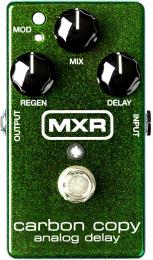
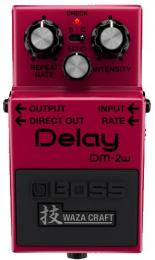
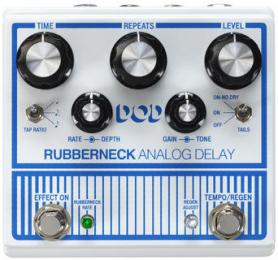
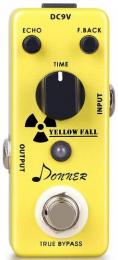
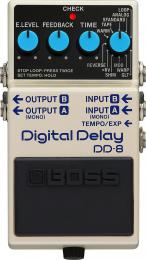
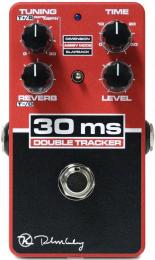
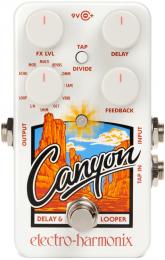
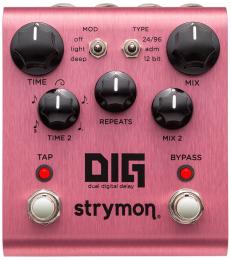
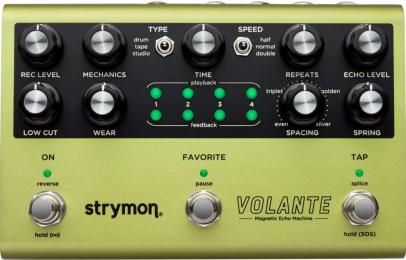
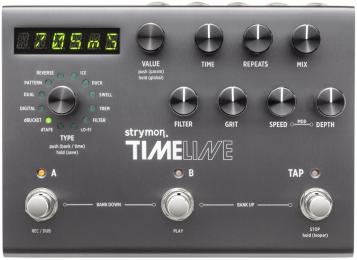
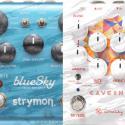
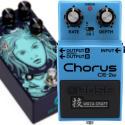
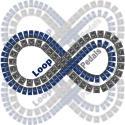
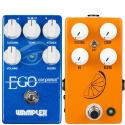
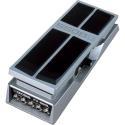
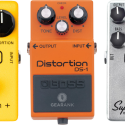
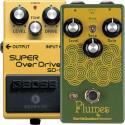
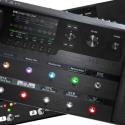
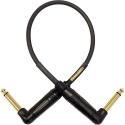
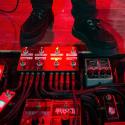





Comments
Today's update resulted in us
Submitted by Jason Horton on
Today's update resulted in us removing our recommendation for the Eventide MicroPitch which we had misclassified as an analog pedal when it is in fact digital. Its ratings weren't high enough to go in the Digital Multiswitch section above, so it was removed from the recommended list.
The Donner Yellow Fall is not
Submitted by Anonymous (not verified) on
The Donner Yellow Fall is not an analog delay AT ALL. It uses a very digital PT2399 delay chip. That is not a BBD. The fact that the Yellow Fall has some analog components does not make it an analog delay; ALL pedals, even those that use digital processors, have analog components. Please do not label delay pedals that don't use BBDs as analog delays.
We had some discussion over
Submitted by Jason Horton on
We had some discussion over this when we published this edition. We decided to classify it as analog due to the Donner website saying, "This all-analog stompbox reproduces the warm and natural classic vintage analog delay sound" on their website.
I'll have another chat with Alexander about this to decide if we should reclassify it as digital.
I contacted Donner and asked
Submitted by Jason Horton on
I contacted Donner and asked them about it, this was what they said, "This pedal is (an) analog pedal. The chip is to allow our product to better simulate natural delays."
I added the (an).
Publication of our October
Submitted by Jason Horton on
Publication of our October 2021 Edition resulted in the following delays coming off the recommended list above:
Our November 2020 updated
Submitted by Jason Horton on
Our November 2020 updated resulted in the following pedals coming off the recommended list above, but you can still see our analysis of them:
As a result of the September
Submitted by Jason Horton on
As a result of the September 2019 update to this guide the following pedals came off our recommended list above, but you can still read our analysis of them:
Today we removed the
Submitted by Jason Horton on
Today we removed the following delay pedals from our recommended list above, due to having been discontinued, but you can still read our analysis of them: